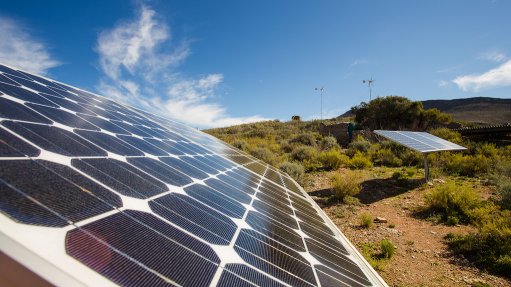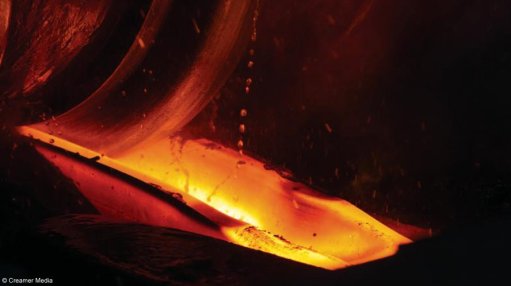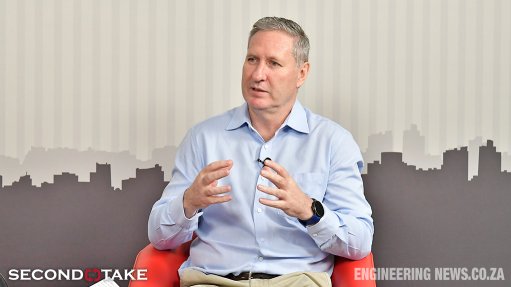SANEDI study looks into residential power use inefficiencies
The South African National Energy Development Institute (SANEDI) has published a study on residential energy use, which suggests that, by improving energy efficiency in this sector, it can reduce evening peak demand.
During peak periods, the residential sector accounts for up to 35% of national electricity demand in South Africa, while, globally, the residential sector consumes one-fifth of the world’s energy.
The study, jointly undertaken by SANEDI, the Department of Mineral Resources and Energy and the University of Cape Town, has found that South Africa’s Standards and Labelling (S&L) Programme has been effective in achieving meaningful savings in appliance energy consumption between 2015 and 2020.
The highest energy savings were seen in refrigeration by a hefty margin, especially in low- and middle-income homes.
“From the research sample, 98.1% of households reported owning at least one fridge, and 24% of households reported owning more than one. It stands to reason that massive energy savings can be gained from these appliances,” comments SANEDI data management manager Teslim Yusuf.
In high-income homes, savings in water heating were dominant but was closely followed by refrigeration. Overall, the programme saw a reduction in energy intensity of 4.1% in 2020.
“The S&L Programme provides shoppers with information about the energy efficiency of an appliance with an easy-to-read label displayed on the front of the appliance. The initiative will continue to provide energy savings into the future as appliances reach their end of life, and consumers purchase newer, more modern and energy efficient appliances,” says Yusuf.
With regard to lighting efficiency, the study highlights that very few households used light-emitting diodes (LEDs) in 2020. LEDs are more energy efficient than incandescent light bulbs and compact florescent lights.
“This indicates a large potential for improving the energy efficiency of lighting. The VC9109 draft lighting regulation, once adopted, aims to remove less efficient lamps from the market,” explains Yusuf.
However, in the short term, to change lamp buying behaviour towards LEDs, the study has recommended that along with power, luminous efficacy becomes a primary performance indicator on lamp packaging. This should be supported by long-term, in-store information campaigns.
“Once again, consumer education is a clear priority. There is no doubt that energy efficiency must be considered at the individual level, if we are to achieve our country’s energy efficiency targets,” Yusuf notes.
In line with this, the study suggests that a few simple, quantifiable behavioural changes can reduce energy use just as much as technical interventions.
“A sound long-term strategy for improving residential energy efficiency in a sustainable manner will likely involve a blend of technical and behavioural interventions,” SANEDI believes.
The study results also address the use of some much-debated household appliances. For example, the findings warn that while dishwashers are likely to be more energy efficient than handwashing, this is only true for a fully loaded dishwasher. For most households, the dishwasher is likely to be part-loaded most of the time.
Additionally, induction stoves are growing in popularity, but these often consume large amounts of standby power and ultimately may consume more energy than an equivalent thermal plate. Induction plates also typically have a poor power factor.
Moreover, a washing machine’s energy efficiency is typically measured based on energy used during its longer cycles, which is very rarely used in practice. The more popular shorter and convenient cycle times tend to be hotter and less energy efficient.
“This report has improved our understanding of residential electricity use and the savings possible and is a strong starting point from which to reassess our consumption,” concludes Yusuf.
Comments
Press Office
Announcements
What's On
Subscribe to improve your user experience...
Option 1 (equivalent of R125 a month):
Receive a weekly copy of Creamer Media's Engineering News & Mining Weekly magazine
(print copy for those in South Africa and e-magazine for those outside of South Africa)
Receive daily email newsletters
Access to full search results
Access archive of magazine back copies
Access to Projects in Progress
Access to ONE Research Report of your choice in PDF format
Option 2 (equivalent of R375 a month):
All benefits from Option 1
PLUS
Access to Creamer Media's Research Channel Africa for ALL Research Reports, in PDF format, on various industrial and mining sectors
including Electricity; Water; Energy Transition; Hydrogen; Roads, Rail and Ports; Coal; Gold; Platinum; Battery Metals; etc.
Already a subscriber?
Forgotten your password?
Receive weekly copy of Creamer Media's Engineering News & Mining Weekly magazine (print copy for those in South Africa and e-magazine for those outside of South Africa)
➕
Recieve daily email newsletters
➕
Access to full search results
➕
Access archive of magazine back copies
➕
Access to Projects in Progress
➕
Access to ONE Research Report of your choice in PDF format
RESEARCH CHANNEL AFRICA
R4500 (equivalent of R375 a month)
SUBSCRIBEAll benefits from Option 1
➕
Access to Creamer Media's Research Channel Africa for ALL Research Reports on various industrial and mining sectors, in PDF format, including on:
Electricity
➕
Water
➕
Energy Transition
➕
Hydrogen
➕
Roads, Rail and Ports
➕
Coal
➕
Gold
➕
Platinum
➕
Battery Metals
➕
etc.
Receive all benefits from Option 1 or Option 2 delivered to numerous people at your company
➕
Multiple User names and Passwords for simultaneous log-ins
➕
Intranet integration access to all in your organisation


















